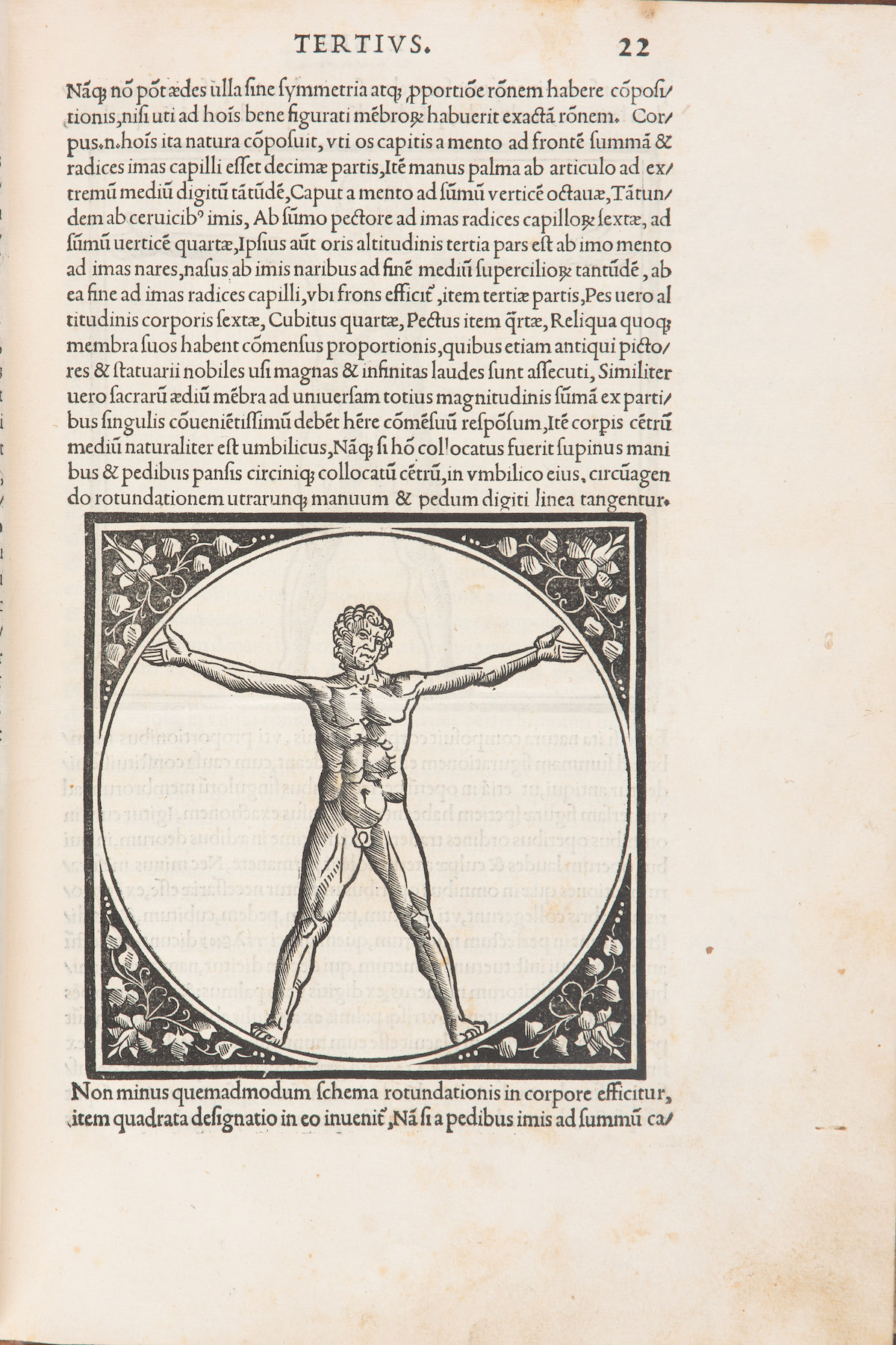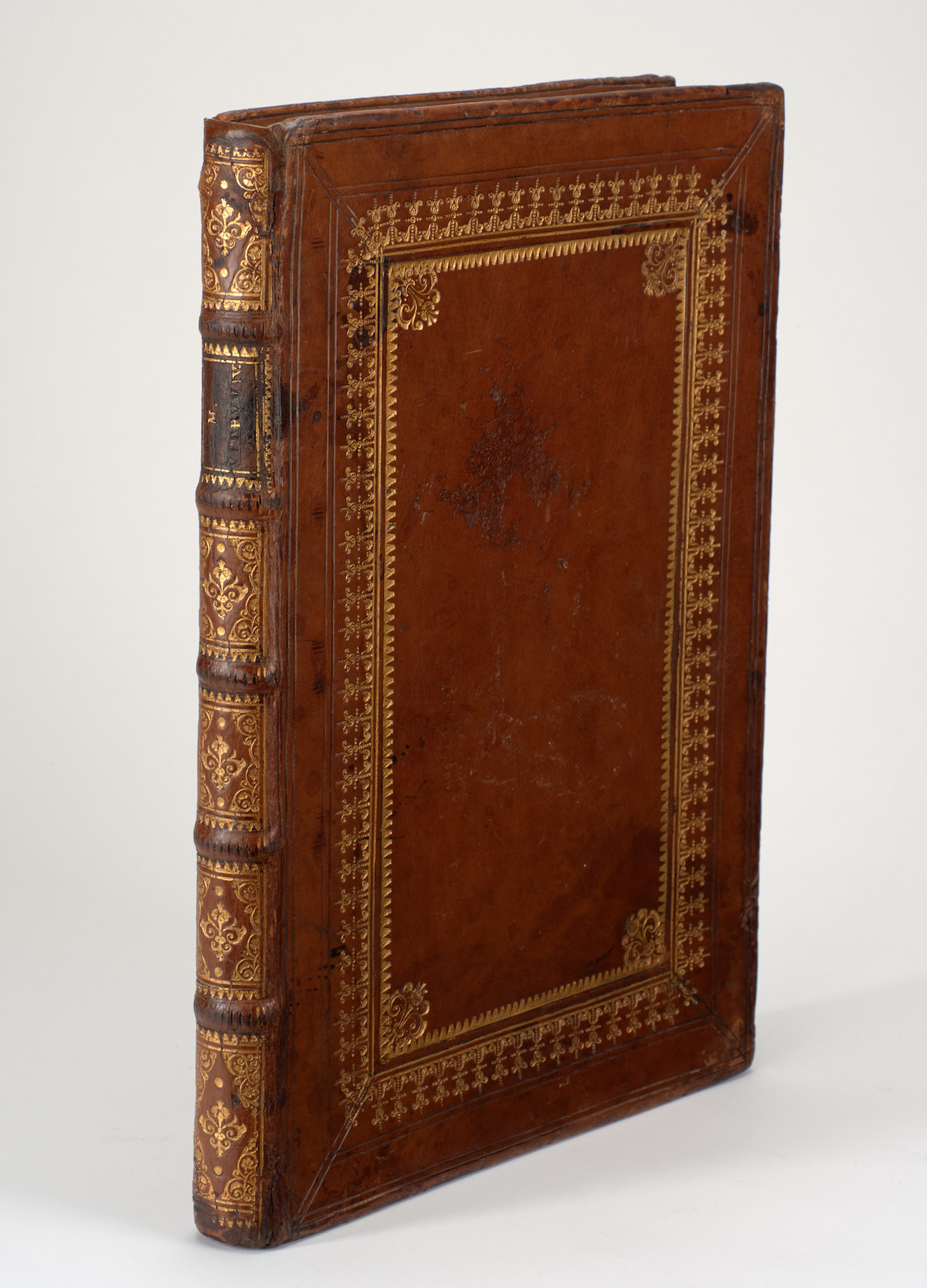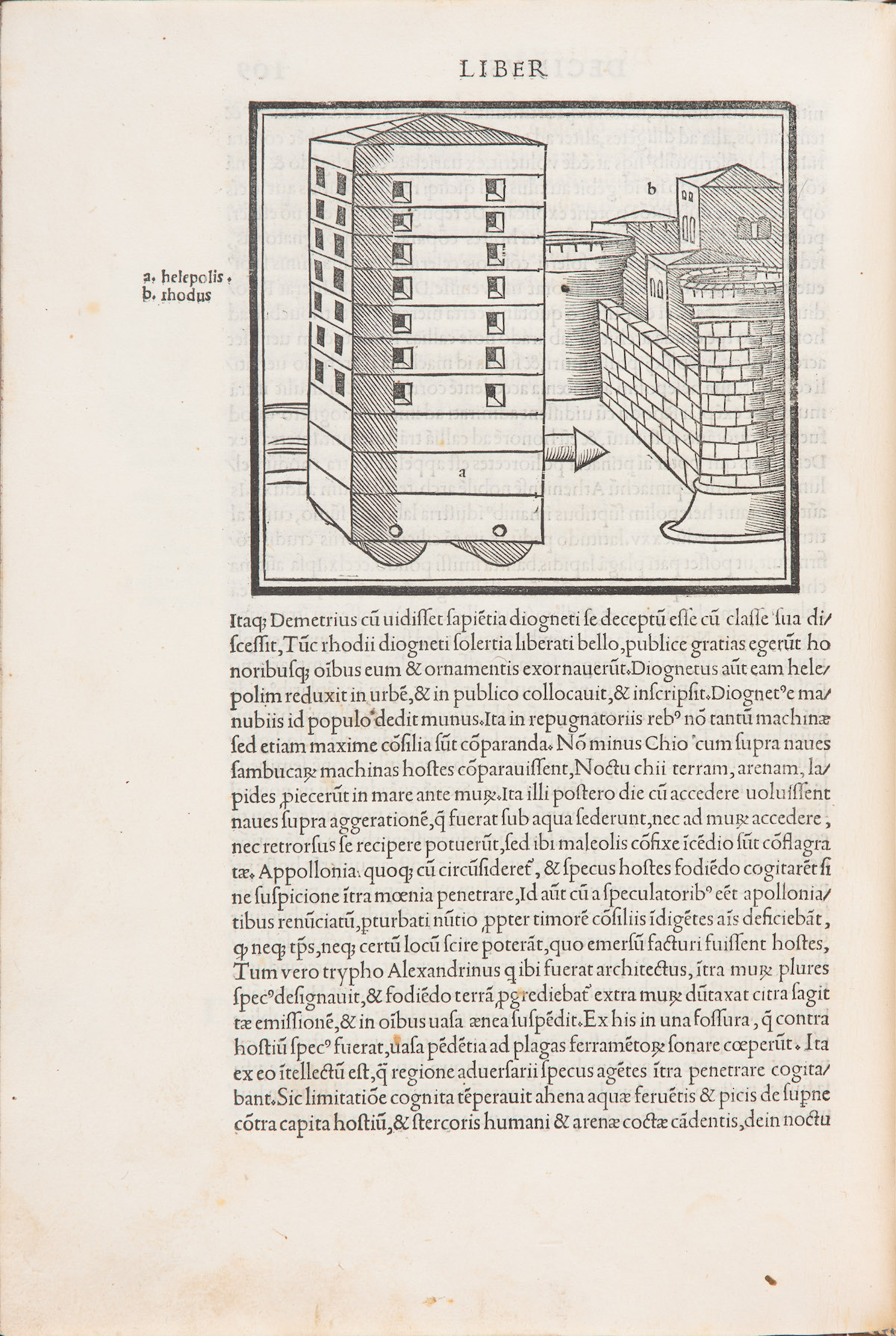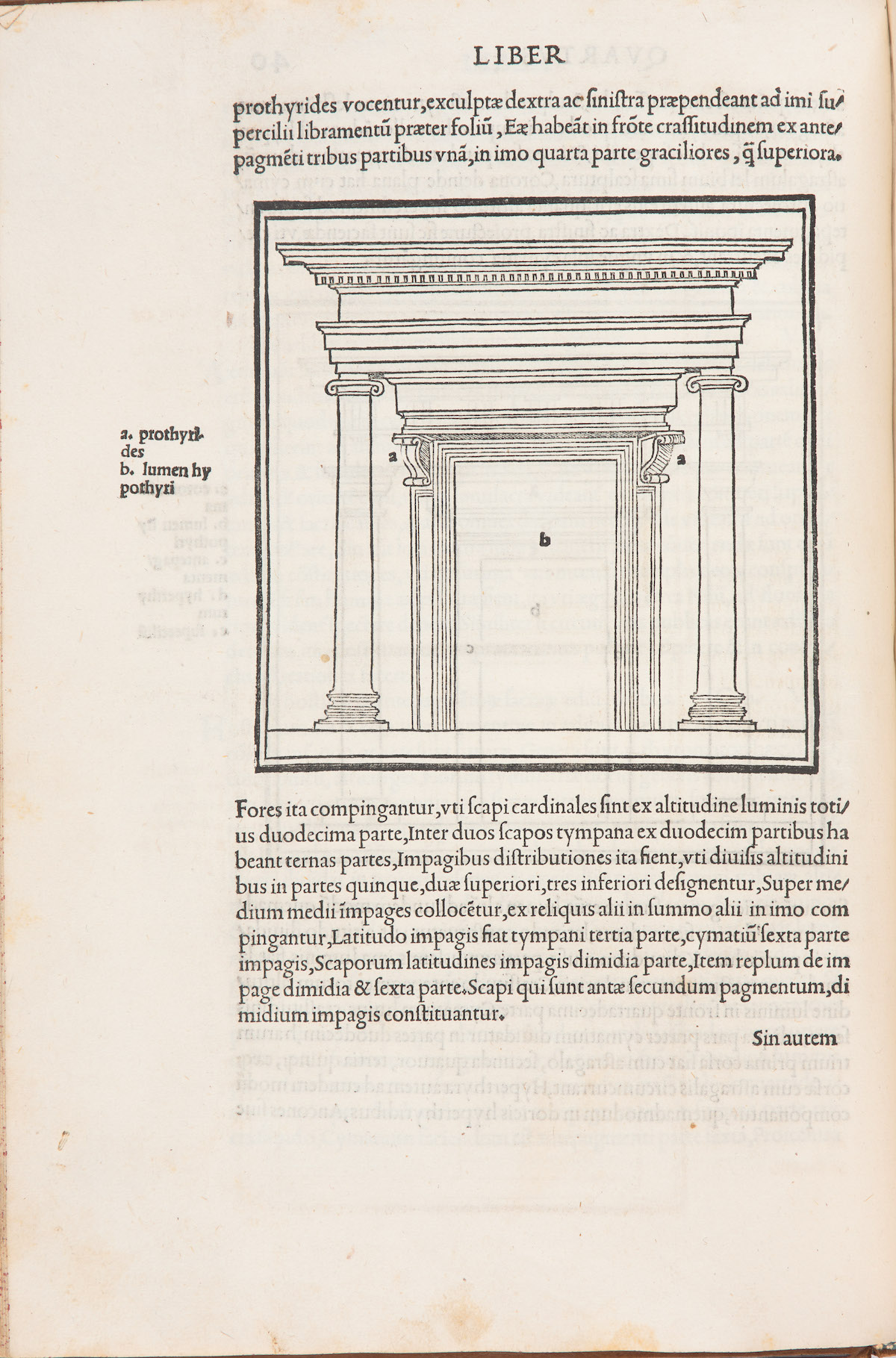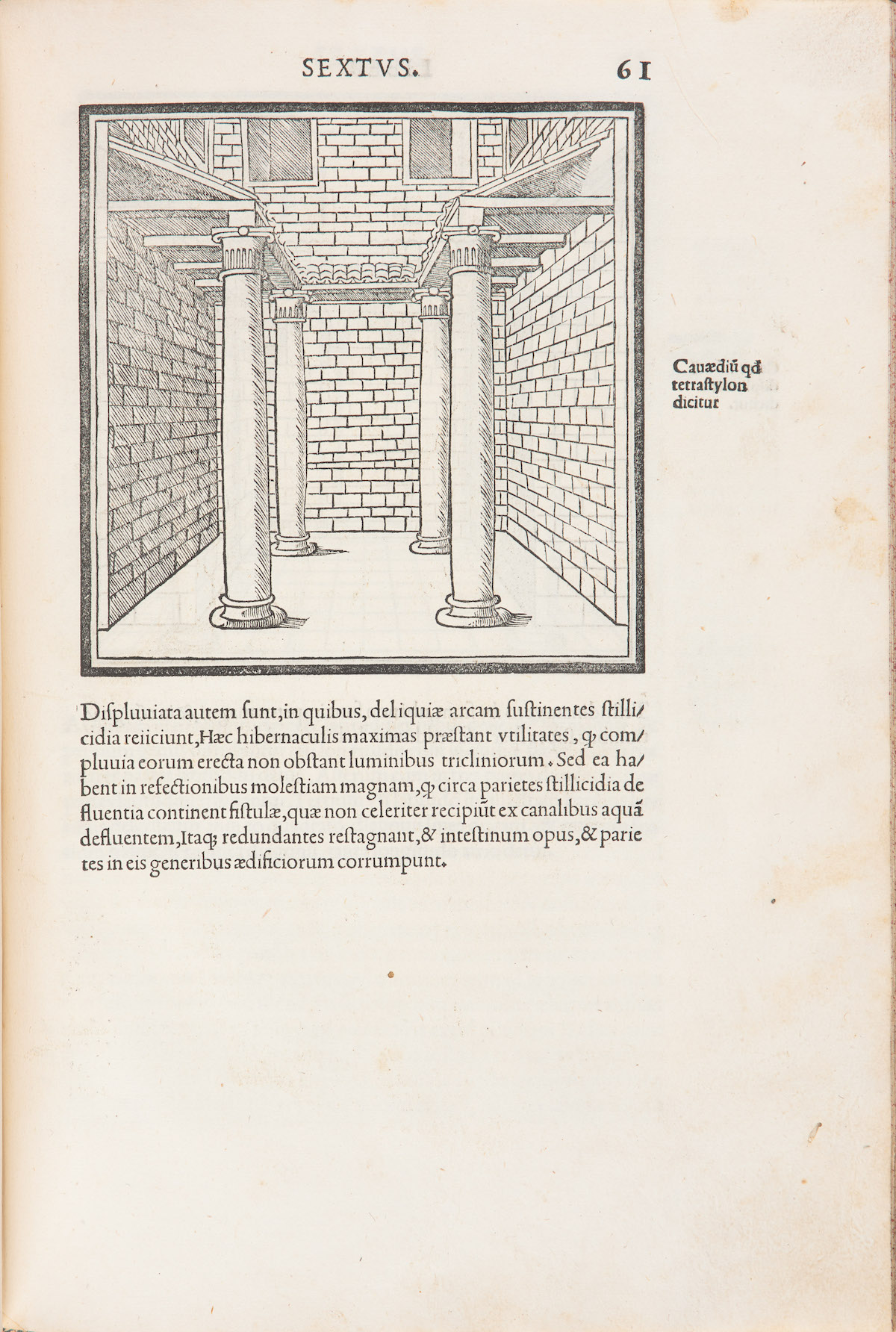landmark of the Italian Renaissance
VITRUVIUS POLLIO, MARCUS. De Architectura
Venice: Giovanni Tacuino, 22 May 1511
Folio. 123 leaves, without the final blank. 136 woodcut illustrations and diagrams in the text. Eighteenth-century calf gilt, boards elaborately tooled in gilt, spine ends restored, recased preserving endpapers bearing CG and clover watermark, a paper Mozart is known to have used. Some soiling, staining, and wear, especially at beginning and end, worming, mostly marginal, a few old repairs. A very good, unpressed copy.
First illustrated edition of Vitruvius’s Ten Books on Architecture, a landmark in the history of architecture. This is the only work on architecture to survive from antiquity. It was Vitruvius (ca. 90-20 BC) who famously declared that a structure must be durable, useful, and beautiful. His terms for order, arrangement, proportion, and fitness for purpose have guided architects for centuries. Vitruvius served in the campaigns of Julius Caesar, and he was involved in the restoration of Roman aqueducts. In ancient Rome, architecture encompassed not just the design of buildings but also civil and mechanical engineering, construction, military engineering, and urban planning.
In the early fifteenth century Vitruvius was rediscovered, and its publication proved to be one of the key events of the Italian Renaissance. “The Vitruvian text became for Renaissance architecture what biblical studies had been for theology” (Millard).
Vitruvius’s Ten Books on Architecture exerted incalculable influence on the Renaissance mind, shaping the thoughts and works of Leonardo da Vinci, Petrarch, Boccaccio, Alberti, Raphael, and others. The ideally proportioned Vitruvian Man, conceived by Vitruvius and famously drawn by Leonardo, is the outstretched human body inscribed within the circle and the square.
This magnificent edition, printed by Tacuino in 1511, is one of the great illustrated books of the Renaissance. It contains fine woodcuts illustrating in great detail the principles of Vitruvius, helping to usher in a golden age of Italian architecture. The editor, Fra Giovanni Giocondo, dedicated the work to Pope Julius II. Gioconda was a Veronese architect who collaborated with Raphael and Sangallo on St. Peter’s after the death of Bramante in 1514. His lavish edition of Vitruvius “provided a reliable text [unlike the previous non-illustrated editions], contained an alphabetic index, and above all contributed to the understanding of the work by the inclusion of 140 woodcuts” (Kruft, History of Architectural Theory).
Very scarce in an old binding. Most copies that have appeared in the market in recent years were rebound in the 19th and 20th centuries.
“by exemplifying the principles of classic architecture, De Architectura became the fundamental architectural textbook for centuries” – Printing and the Mind of Man
“the Vitruvian text became for Renaissance architecture what biblical studies had been for theology”— Millard
Provenance: bookplate of Gianni Boccoli, illustrating a 1567 armillary sphere by Gemma Frisius.
$95,000



